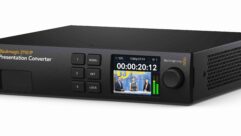Digital AV Changes Everything
You’re heard before that it’s time to start designing digital AV systems, but now it’s a little more pressing. If you don’t, someone outside of AV will.
How many times can you hear about how the AV industry is changing before you tune out the message? One more time? Of course, you tune out later at your peril. The biggest change to date has been the transformation of sound and video to ones and zeroes—digital data that travels across a network. Time and again we hear about AV professionals (and a number of their clients) who are resistant to make the change. One consultant told me that he designed a large venue using all-digital AV running over fi ber-optic cabling. When it came time to build the thing, the integrator tossed out the plans and ran analog over standard wires.
Change can be unsettling. But here’s why you can’t be like that integrator and ignore the transition to all-digital AV systems: If you do, you’ll be out of business. We’re not saying that analog is going to disappear immediately (though check back in a few years), but when AV is reduced to ones and zeroes–when all it cares about is whether it has enough bandwidth to reach its destination–then anyone can do it. And any company looking for ways to grow its business will do it.
You’ve heard of New Meadowlands Stadium, right? We’re not sure how the conversation went, but when it came time to integrate the AV, technology providers Cisco Systems and Verizon must have said, “Oh, we can do that for you, too.” It’s not the fi rst time Verizon has taken on AV work that might have gone to someone else. But they do it because they can. So can electrical, IT, and lowvoltage cabling fi rms. They can’t do a lot of what AV pros do best, but they can do ones and zeroes.
And companies in this industry want to make sure you can, too. That’s why Crestron changed its control architecture and is encouraging AV pros to get into building management. And why Extron is adding streaming media codecs to its traditional AV switchers. Many AV integration firms have seen the writing on the wall and are designing systems that run over IP networks.
Now’s the time for a crash course in how digital video works. It’s for the collective good. Please don’t shoot the messenger.










